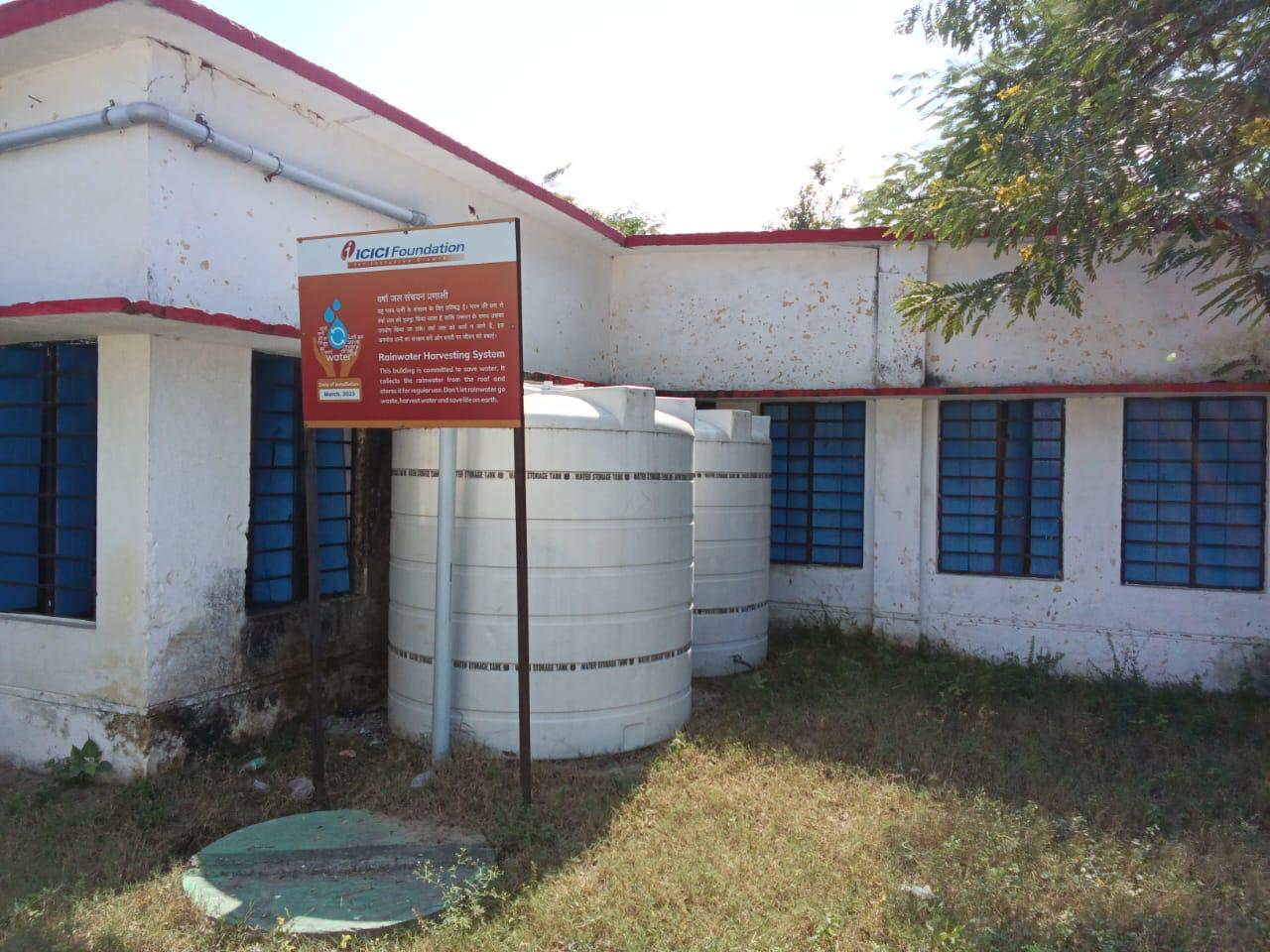A rooftop rainwater harvesting structure collects and stores rainwater from building roofs. This sustainable system channels rain through gutters into storage tanks or recharge pits, reducing water runoff, replenishing groundwater, and providing a supplementary water source for domestic or agricultural use, promoting efficient water management and conservation.
Rooftop rainwater harvesting involves collecting and storing rainwater from building roofs for future use. This eco-friendly method reduces dependence on groundwater, minimizes runoff, and helps conserve water. The collected water can be used for irrigation, household purposes, or groundwater recharge, promoting sustainability and reducing water scarcity issues.
In the plain region of Uttarakhand, deforestation, agriculture pattern change, population growth and other man-made activities have caused a severe water shortage. Hence in addition to accelerated tree plantation, ICICI Foundation installed 100 Rooftop rainwater harvesting structures to address this concern. This created water savings of 23 Lakh Litre water per year. These systems support water storage, create water conservation awareness and support groundwater recharge.
This created water savings of 23 Lakh Litre water per year. Also, mobilize the students towards water conservation activities.
In Udham Singh Nagar, schools are adopting innovative rooftop rainwater harvesting structures to address water scarcity and promote sustainability. These systems collect rainwater from rooftops, channeling it through pipes into storage tanks for use in non-potable needs like sanitation and gardening. The innovation lies in integrating filters that remove debris and impurities, ensuring cleaner water. Schools are also combining this with groundwater recharge pits, where excess water is redirected to replenish the local aquifer. By implementing these systems, schools are reducing dependency on external water sources while educating students about environmental conservation and sustainable water management practices.












